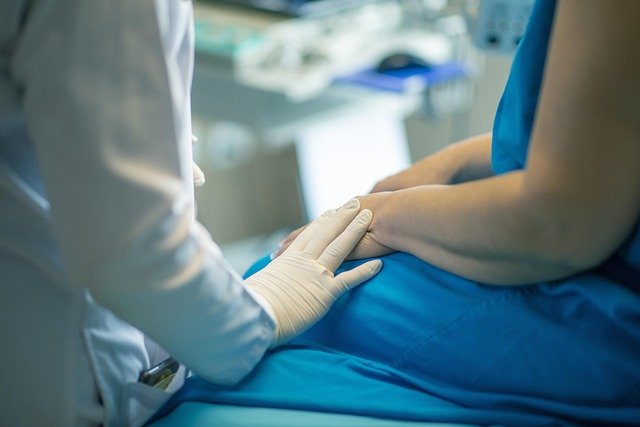Minimally Invasive Procedures for Persistent Rectal Symptoms
This article outlines minimally invasive options for persistent rectal and perianal symptoms, describing when to seek proctology assessment, what procedures involve, and how lifestyle, stool habits, and topical care support recovery. It is factual and aimed at readers evaluating treatment choices.

Persistent rectal or perianal symptoms can range from discomfort to visible bleeding, and understanding minimally invasive options helps people and clinicians choose appropriate care. Conditions commonly grouped under piles or hemorrhoidal disease often produce pain, itching, swelling, or bleeding that interferes with daily life. Minimally invasive procedures aim to reduce inflammation and restore normal stool passage while limiting recovery time compared with traditional surgery. This article explains common symptoms, diagnostic considerations, procedure types, adjunctive measures like sitzbath and fiber, and realistic expectations for recovery and follow-up care.
What are common rectal and perianal symptoms?
Rectal and perianal symptoms include bleeding with stool, anal itching, visible lumps, and local swelling or discomfort. Patients may report changes in bowel habits such as persistent constipation or straining that worsen symptoms. Not all rectal bleeding is due to piles; proctology assessment helps distinguish hemorrhoidal disease from fissures, inflammatory conditions, or other causes. A careful history and physical exam evaluate the severity of inflammation, ongoing bleeding, and whether conservative measures have been adequate. Documentation of stool frequency and consistency can guide nonprocedural steps before any intervention.
When to consult proctology for piles and bleeding?
Consult a proctology specialist when symptoms are persistent, recurrent, or associated with moderate to heavy bleeding, severe pain, or prolapse that affects quality of life. Referral is appropriate if conservative management—fiber increase, improved stool habits, topical care, and sitzbath—fails after several weeks, or when there is uncertainty about the diagnosis. Proctologists use anoscopy or sigmoidoscopy as indicated to confirm hemorrhoidal disease, rule out other rectal pathology, and plan minimally invasive treatments tailored to symptom grade and patient health.
How do minimally invasive procedures work?
Minimally invasive approaches aim to reduce blood flow to enlarged hemorrhoidal tissue, reposition prolapsed tissue, or directly remove problematic segments with limited trauma. Common techniques include rubber band ligation, which places a tight band to induce shrinkage; infrared coagulation or bipolar cautery to scar and shrink tissue; and stapled hemorrhoidopexy for selected prolapse cases. Each method has specific indications based on bleeding, prolapse, or pain. Benefits typically include shorter procedure time, less postoperative pain, and quicker return to routine activities compared with conventional excisional surgery.
Role of lifestyle, fiber, stool habits, and sitzbath
Lifestyle modifications are central to both prevention and recovery. Increasing dietary fiber and fluids can soften stool, reduce constipation, and lower straining—key contributors to hemorrhoidal enlargement. Regular, unhurried bowel habits and avoiding prolonged sitting on the toilet help minimize stress on perianal veins. Warm sitzbath sessions can provide symptomatic relief for itching, discomfort, and inflammation after procedures or during flare-ups. These nonsurgical measures are often combined with procedural treatments to improve outcomes and reduce recurrence.
Managing inflammation, itching, swelling, and topical care
Topical treatments and targeted symptom control complement procedural care. Over-the-counter topical agents may reduce local inflammation and itching, while short-term use of prescribed topical medications can address specific inflammatory symptoms under medical guidance. Proper local hygiene, avoidance of irritating wipes, and gentle drying after bowel movements decrease persistent irritation. Swelling and pain after minimally invasive procedures are usually lower than after excisional surgery, but clear postprocedural instructions regarding wound care, stool softeners, and activity modification are important for smooth recovery.
Phlebology approaches and recovery expectations
Phlebology-related techniques focus on the venous component of hemorrhoidal disease; embolization of hemorrhoidal arteries is an emerging option in some centers and reflects cross-disciplinary care between vascular specialists and proctology teams. Recovery from minimally invasive treatments typically involves brief downtime, variable pain managed with simple analgesics, and follow-up to assess bleeding or recurrent prolapse. Patients should expect gradual symptom improvement over days to weeks; persistent or worsening symptoms warrant reassessment. Individual recovery depends on symptom severity, underlying constipation, and adherence to lifestyle recommendations.
This article is for informational purposes only and should not be considered medical advice. Please consult a qualified healthcare professional for personalized guidance and treatment.
Minimally invasive procedures can reduce symptoms and shorten recovery for many people with rectal and perianal complaints, but they are one component of a broader management plan. Combining accurate diagnosis, appropriate procedural selection, and attention to stool habits, fiber intake, topical measures, and sitzbath routines supports better long-term outcomes and may reduce recurrence of bleeding, itching, or swelling.






